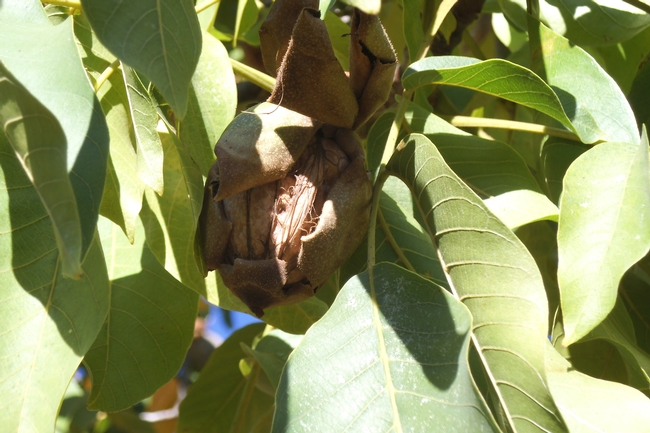Dry Farming
By Jutta Thoerner UCCE Master Gardener
I have heard about dry farming crops in agriculture, could I save water in my garden with the same method? Susan, Paso Robles
Dry farming is a technique that has been used for thousands of years in the Mediterranean regions for farming olives, grapes and grains. How does it work? Using a tillage technique, the farmer/gardener starts to work the soil as soon as possible after the last rain of the season. By disking (two passes) and using a roller, the goal is to have three to four inches of dry, even soil when cultivation is done. This is often called dust mulch or dust blanket and it traps the moisture in the soil.
In order for this technique to work, several key elements have to be present. The soil must have good water holding capability, which excludes sandy soils or heavily fractured soils. This technique requires a minimum of 10-12 inches of rain during the rainy season. If the crop is a permanent crop, such as grapes or tree crops, sufficient spacing between the plants is required to avoid competition for water and nutrients. Planting the appropriate rootstock for permanent crops is essential for dry farming in an orchard or vineyard. Under the right conditions, the following vegetables, fruits and nuts can be successfully dry farmed in California: tomatoes, pumpkins, watermelons, cantaloupes, winter squash, olives, grapes, garbanzos, apricots, plums, pears, apples, various grains, potatoes, almonds and walnuts.
The farmer/gardener has to be content with lower yields, often 1/3 of the yield expected from irrigated crops. Fruit and nut crops are often too small for produce buyers from large grocery stores and markets, even though they are generally sweeter, denser and store better than commercial grown products.
Here are some interesting water saving facts from a UC Davis cost study. If not irrigated, these crops would save the following amounts of water: two feet per acre for potatoes (Klamath basin), three feet per acre for apples (Sierra Foothills) and 16,000 gallons/acre for lightly irrigated grapes (Napa Valley). While dry farming is not for every grower or for every region in California, it could be a promising alternative system in times of uncertain water supply.
